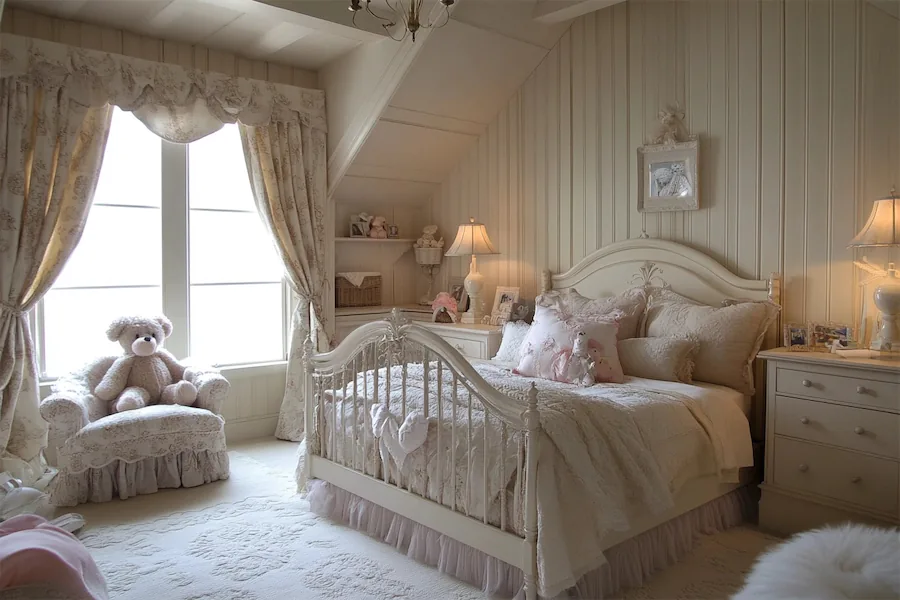Designing a shabby chic kid’s room blends vintage charm with a cozy, playful atmosphere, creating a space that’s both functional and enchanting. This style emphasizes comfort, soft color palettes, and repurposed furnishings, making it ideal for a child’s sanctuary.
Introduction to Shabby Chic Kid Rooms
Shabby chic design originated in the late 20th century as a response to the opulence of preceding styles, focusing instead on simplicity, comfort, and the beauty of imperfection. In children’s rooms, this translates to spaces that are inviting, whimsical, and practical, encouraging creativity and relaxation.
History and Origins of Shabby Chic
The term “shabby chic” was popularized in the 1980s, inspired by the relaxed elegance of English country homes. It celebrates the charm of aged, distressed furniture and soft, muted color schemes. Incorporating this style into children’s rooms brings a sense of history and character, fostering an environment that’s both nurturing and inspiring.
Key Features of Shabby Chic Kid Rooms
- Soft Color Palettes: Utilize whites, pastels, and muted tones to create a serene atmosphere. Colors like soft pinks, blues, and creams are common, providing a gentle backdrop that soothes and calms.
- Vintage and Distressed Furniture: Incorporate pieces with a timeworn appearance, such as antique beds or dressers with chipped paint, to add character and a sense of nostalgia. Repurposing old furniture not only adds charm but also promotes sustainability.
- Floral and Lace Accents: Introduce floral patterns through bedding, curtains, or wallpaper, and add lace details to enhance the romantic, vintage feel. These elements contribute to a whimsical and delicate aesthetic.
- Layered Textiles: Combine various fabrics like cotton, linen, and crochet to add depth and coziness. Layering rugs, throws, and cushions creates a warm and inviting space for children to play and rest.
- Personalized Decor: Incorporate handmade or DIY items, such as painted frames or crafted mobiles, to add a personal touch and encourage creativity. This not only makes the room unique but also allows for bonding through crafting.
Applications of Shabby Chic in Children’s Rooms
- Nurseries: Soft hues and gentle textures create a calming environment for infants. Incorporating vintage cribs and rocking chairs can make the space both functional and stylish.
- Bedrooms for Older Children: Incorporate study areas with distressed wood desks and open shelving to blend functionality with aesthetic appeal. Personalized decor, like name plaques or artwork, can make the space feel uniquely theirs.
- Playrooms: Use durable, repurposed furniture and ample storage solutions to maintain an organized yet playful atmosphere. Open shelves with woven baskets can store toys while adding to the room’s charm.
Considerations When Choosing Shabby Chic Decor
- Durability: Ensure that vintage or distressed furniture is safe and sturdy for children. It’s essential to check for lead paint in older pieces and reinforce any wobbly parts.
- Maintenance: Select materials and finishes that are easy to clean and maintain, considering the likelihood of spills and wear in a child’s room. Slipcovers for furniture can be a practical solution.
- Personal Preferences: Involve your child in the design process to incorporate elements that reflect their interests and personality, making the space truly their own. This can include choosing colors, patterns, or themes they love.
Conclusion
A shabby chic kid’s room combines the elegance of vintage design with the comfort and practicality needed for a child’s space. By focusing on soft colors, distressed furnishings, and personalized touches, you can create a nurturing environment that grows with your child, blending timeless aesthetics with modern functionality.
